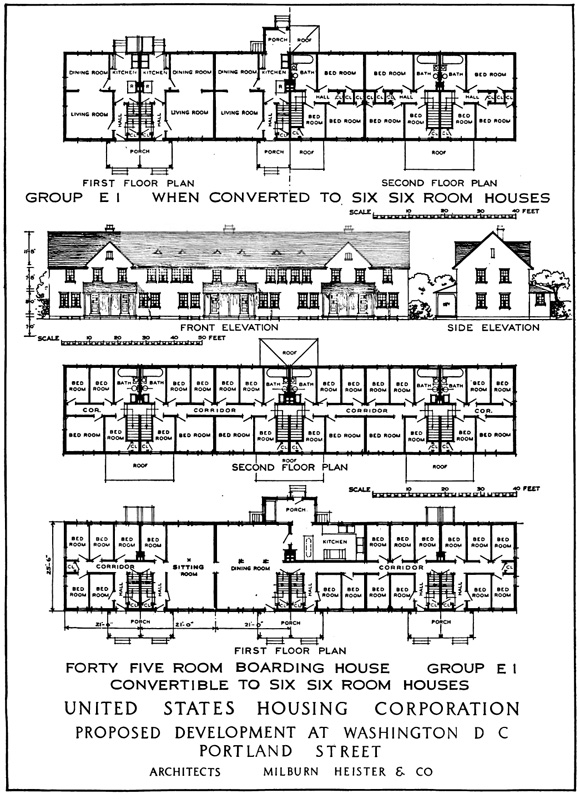Washington, DC
General Description (1919 report):
"The city of Washington suffered more than did most of the industrial towns by overcrowding during the war. The war emergency had increased enormously the number of civilian employees of the Government. Government offices came to occupy not only Government buildings but buildings all over town wherever space was available. The Housing Corporation for instance occupied the three upper floors of a large garage building.
"Living quarters and eating places in town were almost intolerably congested, and transportation from the outlying residential districts was swamped by the increased demand... The Civil Service Commission did a large amount of advertising, but much of their effort was wasted because the story of Washington's predicament had preceded it. Even after applicants had passed their examinations a large proportion of them declined places, and many who had actually come to Washington later resigned and returned home.
"Governmental and local organizations set to work to overcome these difficulties by making existing housing available, but they found that the point of saturation was already nearly reached... The powers given the Housing Corporation included the right of commandeering either the temporary use or the permanent ownership of houses and land, as well as the building of new houses. The signing of the armistice, however, insured that conditions would grown no worse, before the corporation had gone to the full extent of its power..."
"Housing construction as planned for Government employees took two forms, first, temporary buildings chiefly for single workers, and, second, permanent houses, chiefly for families... There was a prospective permanent demand for these latter houses after the war, both on account of the assured permanent growth of the city, not paralleled by building construction, and because of the number of houses to be vacated and destroyed under the provisions of the alley dwelling law."
Washington District Plan
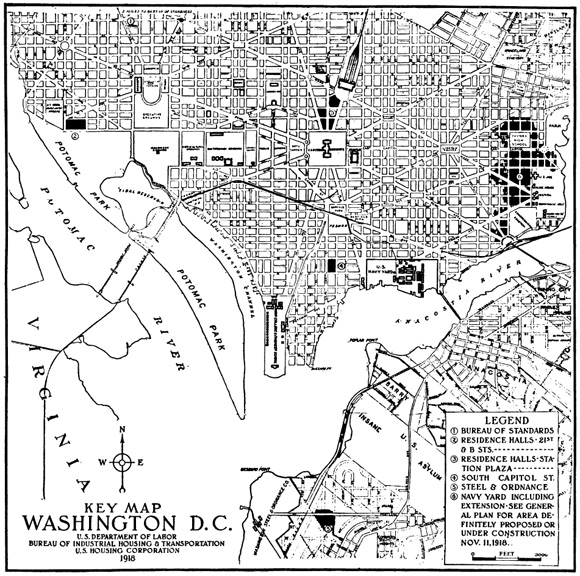
The Washington, DC Sites:
Capitol and Union Station Sites:
Area planned: 16.61 acres. Housing planned and constructed: 12 dormitories for 162 women each; total, 1,944 women.
Twenty-first and B Streets Site:
Area planned:11.87 acres. Housing planned: 336 families in apartments; 1622 single workers in dormitories
"It was desired that temporary housing should avail itself, so far as possible, of existing Government Property, and preference was early expressed...for the undeveloped blocks acquired as part of the Union Station improvement some years ago... The groups between the Capitol and Union Station were almost completed at the time of the armistice, and have since been occupied. The group at Twenty-first and B Streets was not so far advanced, and was abandoned."
Site Plan, Photos, and Rendering, 1919
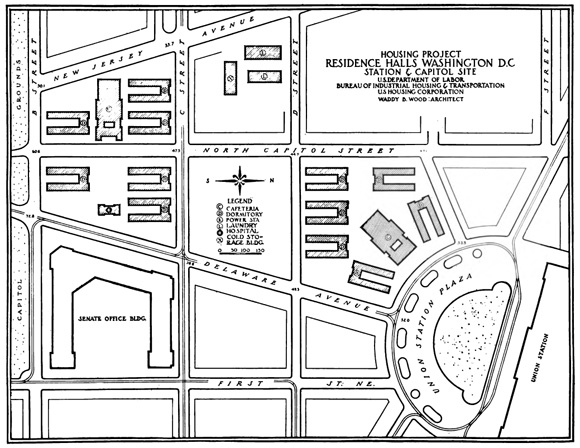

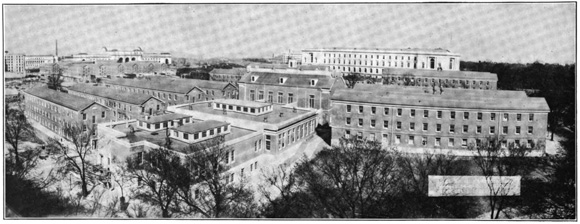
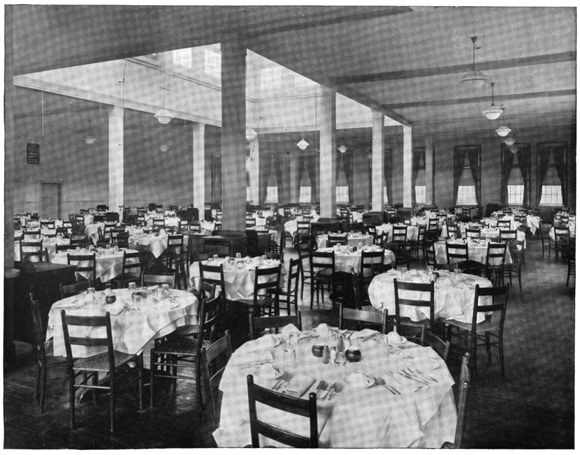
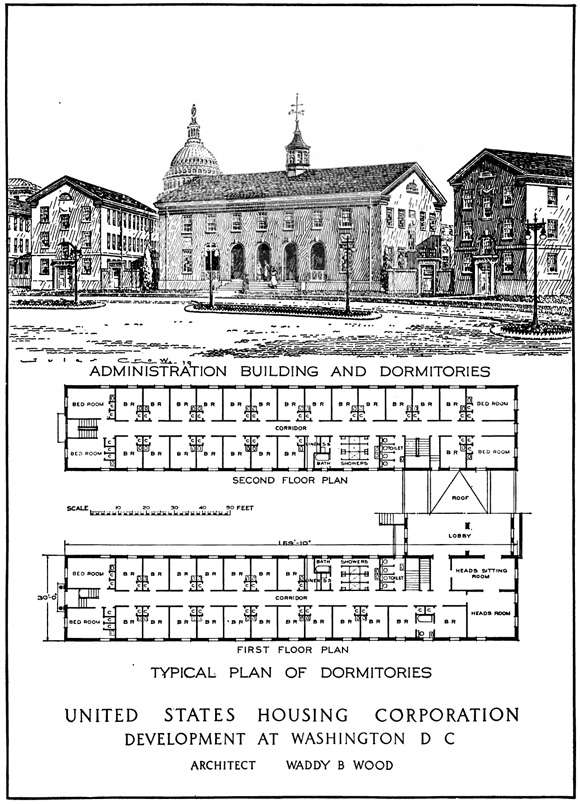
Bureau of Standards Site:
Area planned: 9.03 acres. Housing planned: Apartment houses, 102 families. Dormitories, 166 single persons.
"In the proposed housing for the Bureau of Standards one pecurliarity was the large proportion of very small families, many of the employees being young married men with not more than one child. The reason for this is that the salaries are so low that many of the scientific men leave after a few years... The Bureau of Standards is located 3 1/2 miles northwest of the White House... Land values have increased here to a very high point, so that the difficulties of finding a suitable piece of property were unusual...West of the bureau, however, a reasonably level tract was found..."
Site Plan, 1919
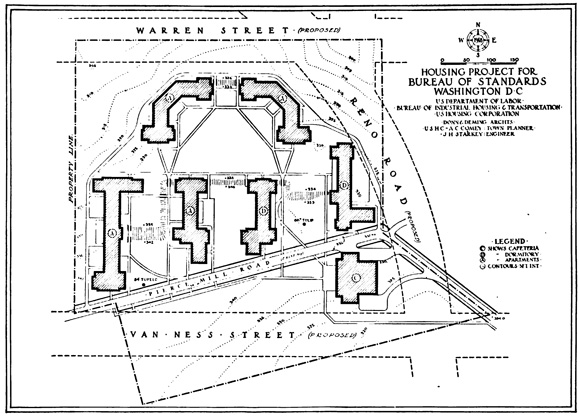
South Capitol Street Site:
Area planned: 7.09 acres. Housing planned: Row houses, 52 families; apartment houses, 149 families; total, 201 families.
"Another site, for the present accommodation of civilian war workers with families, was chosen east of South Capitol Street between N and M Streets. It was also to serve another purpose. The Ellen Wilson Homes Co., formed before the war, was contemplating the provision of proper housing for those about to be displaced by the alley dwellings law... The plan contemplated a very dense development of one family and two family (two-flat) houses in rows, relieved by two small reservations connecting with each other across the center of the tract and reached by archways from the principal streets."
Renderings, 1919

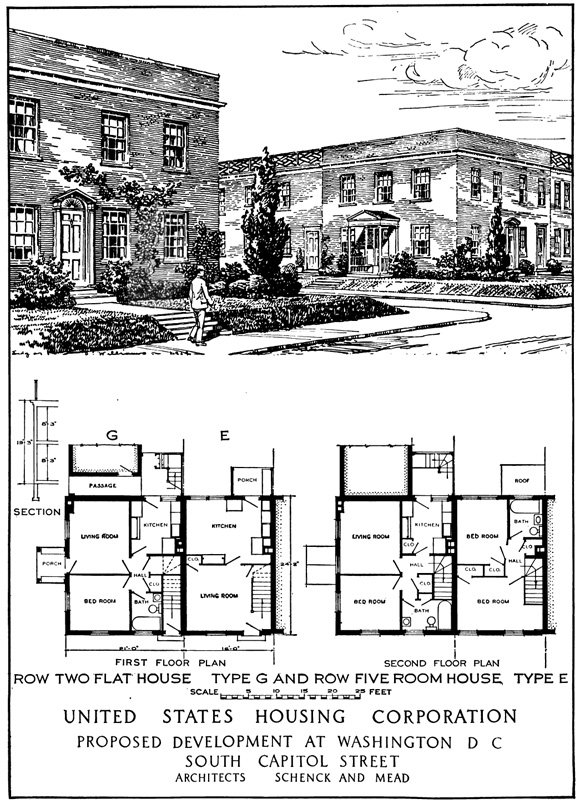
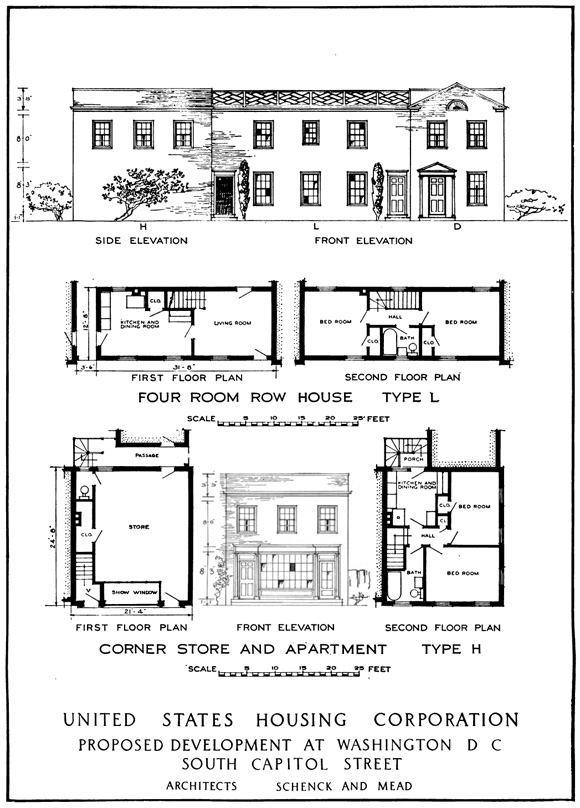
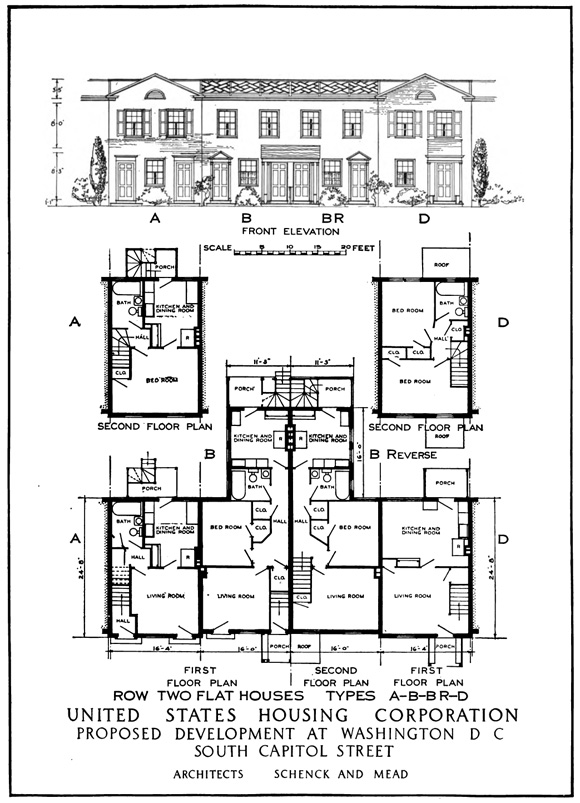
Washington Steel & Ordnance Co Site:
Area planned: 10.50 acres. Housing planned: Detached houses, 12 families; semidetached houses, 38 families; total, 50 families. Convertible dormitories, 164 single workers
"In addition to Government clerks and navy-yard workers, it was found necessary to provide a small amount of housing for Washington's only large industrial plant, the Steel & Ordnance Co. on Portland Street, south of Anacostia River. A favorable tract of 10 acres was laid out for 50 detached and semidetached houses and 4 dormitories convertible into 6 row houses each. As the previously adopted city street system provided very large blocks, interior spaces were reserved for playgrounds or gardens."
Rendering, 1919
